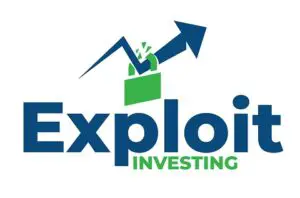
Dividends are one way companies return cash to shareholders. They have been a substantial part of overall stock returns over the life of markets.
Many of the stocks I frequently invest in Japan have dividend payouts, so why are they so important and how much weight should we put on them?
Retirees and dividend growth investors focus exclusively on dividends as a part of their overall strategy. Dividends also provide an extra dimension in fundamental analysis for value investors. Growth investors don’t focus on dividends as it impedes a company’s growth.
The importance of dividends cannot be understated for some styles of investing, but others typically ignore them. Whether you choose to focus on dividends or not this article will help you decide on the best strategy for you.
How Important Dividends Are for Investors
Dividends are a welcome investment option for many investors as they provide a steady influx of cash that can be used as profits or reinvested for further growth. They are also an excellent tool for stock evaluation and usually decrease volatility in an investment portfolio.
Many investors love dividends, but when they realize how small their dividend payout can be they tend to get discouraged. There are a few types of dividend investors who see past this early return and focus on the future.
- Dividend growth investors.
- Yield focused retirement investors.
- Value seeking dividend investors.
While these three types of investors care a great deal about dividends there are also investors who don’t care about them at all. Let’s take a look at what type of investor cares about dividends versus what kind doesn’t.
The Three Classes of Investors Who Care About Dividends
Mature profitable companies make up the bulk dividend payouts. Aside from special dividends, consistent and reliable dividends are what the the three above classes of investors focus on.
While many profitable company’s payout dividends, some unprofitable ones also pay them. But, be careful as these dividends can be cut if the company does not have enough cash to pay them out.
Dividend Growth Investors
Dividend growth investing was the first strategy outside of passive investing that I attempted. It was a very attractive strategy as it focused on the future dividend payouts I would receive. Dividend payouts may start out small but, they would increase over time and provide me with a form of passive income.
The dividend growth strategy focuses on the company and its earnings growth. Because if earnings are growing then there is more capital available for dividend payouts. But, its not enough to focus on earnings growth, you also need to pay attention to whether the company is increasing dividend payouts over time.
From that point you can then see how quickly dividends are increasing over time and focus on the company’s that are increasing dividend payouts the fastest.
Yield Focused Retirement Investors
These types of investors usually have a lot more cash. Over a lifetime of work they have a nest egg that they want to protect and earn cashflow on.

This type of investor differs from the growth investor in that it looks for stable dividend payouts. Company’s that have been paying dividends for decades consistently and reliably.
This investor will look for company’s with higher dividend yields rather than focusing on growth. Since they need cash now rather than in the future.
Value Seeking Dividend Investor
After bailing on the dividend growth investing strategy, I came to the conclusion higher yielding dividend stocks that point out undervaluation is the best strategy. This type of investor opportunistically looks for company’s with high earnings growth or potential turnarounds.
These dividends are higher than both Yield focused investors and dividend growth investors. As a result overall returns are higher since when a company has fully turned around its yield drops and stock price rises.
This way you lock in a high yield while you wait for a turnaround. At the point of turnaround you will sell this stock for a better opportunity, then rinse and repeat.
This strategy is best for investors in lower tax brackets or in a ROTH IRA, since it can produce hefty capital gains.
Why Growth Investors Don’t Care About Dividends
For many investors, the dividend yield and payouts aren’t attractive enough to justify the significant investment. For reference, if we take the average dividend yield for the S&P 500 – 1.4%, it means that with $10,000 invested, you would get a measly $140 after 12 months.
If you factor inflation into that equation, the returns will be close to zero. You may ask:
“How much do I need to invest to get a meaningful return?”
If you are investing for a comfortable retirement, you would need around $3.4 million to earn the average annual spending amount for retirees, which is $48,000.
However, most people in the U.S. only have $200,000 worth of savings by the time they reach 65. Even if the stock yield is much higher than 1.4%, most people still wouldn’t be able to invest enough to earn a respectable income.
For a lot of investors, these numbers just don’t make sense, and they would rather invest their money into things that may be riskier but can also yield higher returns in not such a long time.
And let’s not forget the tax implications. Dividends are taxed as regular income. Depending on your income class, you have to give up at least 22% of your dividend earnings in taxes each year.
Dividends Aren’t What They Used To Be
While dividends still hold a lot of value as an investment opportunity, that value has been on the decline for years. The following factors are attributed to this:
- Low interest rates increase stock prices, decreasing dividend yield.
- Stock buybacks are more favorable because of tax savings.
While current dividend yields are higher than we’ve seen in recent times, they are actually much lower when compared over a more extended period. A contributing factor for this is lower bond yields and interest rates, which heavily impact corporate behavior.
As a result of falling yields, the dividend payout ratios also suffer. Despite dividend payouts being the highest they have ever been, the payout ratio, which is the percentage of profits given to shareholders, is very low.
Popularity of Share Buybacks
Companies have started a trend of buying back their own shares from the profits they’ve accumulated instead of giving them to shareholders. Since 1997, buybacks have exceeded dividends in every year except for 2003. In recent years, the gap has been getting even more significant.
Share buybacks are usually good for shareholders, arguably even more so than dividends. When companies buy large portions of the stock, the amount of shares in circulation reduces, which boosts the price up.
The problem is that due to low interest rates, inflated stocks are much more expensive to buy back. Therefore reducing the returns of the shareholder in the long term. When companies buyback shares above book value it reduces shareholder equity.
This isn’t so bad if a stock is growing earnings quickly, but it becomes a balancing act between growing earnings and buying back shares when they are cheap and many company’s can’t be trusted to get this right.
In these instances dividends are much more beneficial to both shareholders and the company.
The Alternatives
As high-paying dividends seem to be a thing of the past, investors are looking at other options. Here are some alternatives that can also provide steady income without most of the downfalls that come with dividend stocks.
Alternatively, you can find some high yielding dividend stocks in Japan. These stocks are the basis of my Net Net Portfolio.
Royalty Trusts
Royalty trusts are a high-yield investment class that is often overlooked. There are about two dozen of them today listed on U.S. exchanges. These trusts are enticing because of their high yields, which often exceed 10%.
As a reminder, normal dividend yields are usually only around 2-5%.
Royalty trusts are used as a form of financing in the energy sector. Energy producers sell royalty rights from gas and oil extraction. The trust uses the royalty cash flow to pay the royalty trust shareholders, also known as unitholders.

Preferred Stocks
shareholders that hold preferred stocks shareholders get priority over common shareholders, which typically means higher yields, among other benefits. Preferred stocks are relatively similar to bonds in terms of characteristics and are often referred to as hybrid securities.
The benefit you’ll have with preferred stocks is that companies will prioritize you in the event of a dividend payout.
Companies aren’t allowed to pay dividends to common shareholders until their preferred ones are paid first. They are also flexible as you can convert them to common stock for a predetermined price.
Mortgage REITs
Unlike dividends, mortgage REIT or Real Estate Investment Trusts are investments that specialize in the real-estate sector. These trusts have developed a reputation for growing money through investments in various real-estate industries.
They specialize in mortgages, mortgage-backed securities, and other similar assets.
These trusts make money through the interest they charge for giving out real estate loans. This is an excellent option for investors who want to take part in the lucrative real estate market without having to spend on expensive properties.
Should You Care About Dividends?
Many investors, perhaps including you, are desperate for some dividend income. Still, the fact of the matter is that dividend payouts aren’t as attractive as some other investment opportunities, especially if you consider inflation.
Even though many investors hold dividends in high regard, with the amount of new and exciting investment opportunities out there, it might be best to look elsewhere.
You should care about dividends as an indicator of a company’s financial health. In the end, if you invest in a company that grows 300% over 10 years, you would be far better off than expecting a measly 2% return on a dividend stock that hasn’t increased much in value in years.
That’s why its important not to solely look at dividend returns but also look for share price appreciation alongside it.
In the end, however, it is only you who can decide whether dividends should be a significant part of your portfolio. As with anything when it comes to investing, doing your own research is always your best option.
